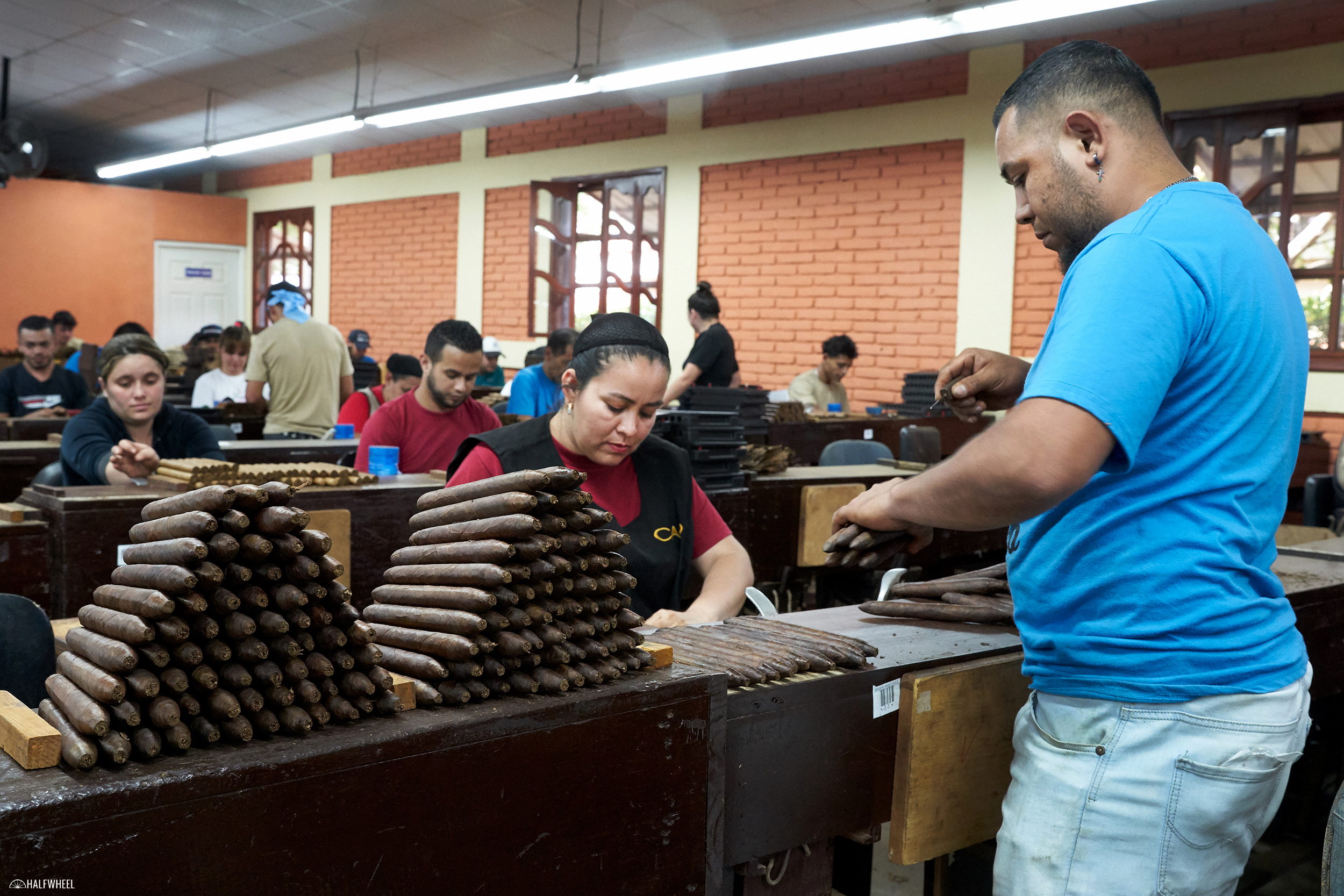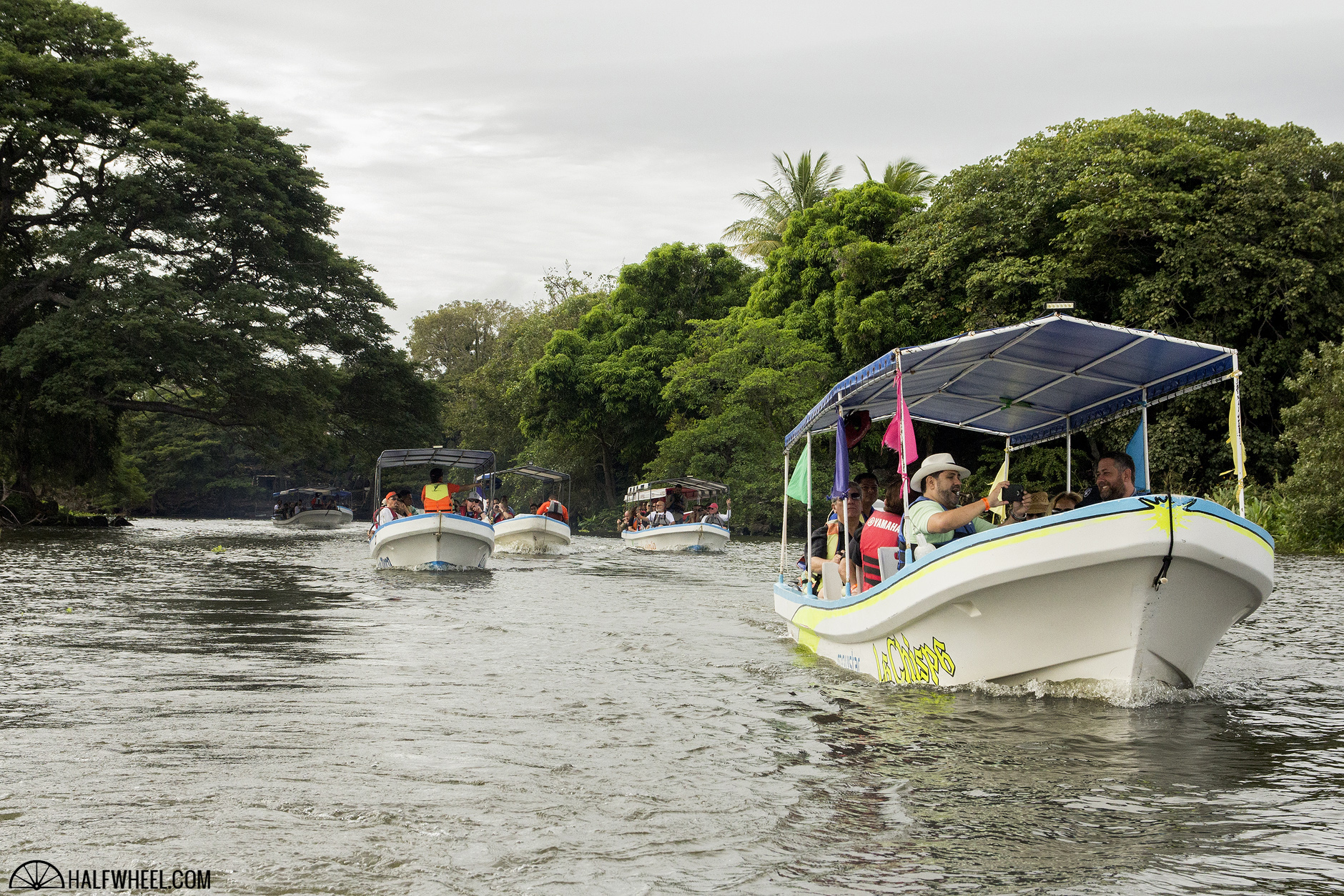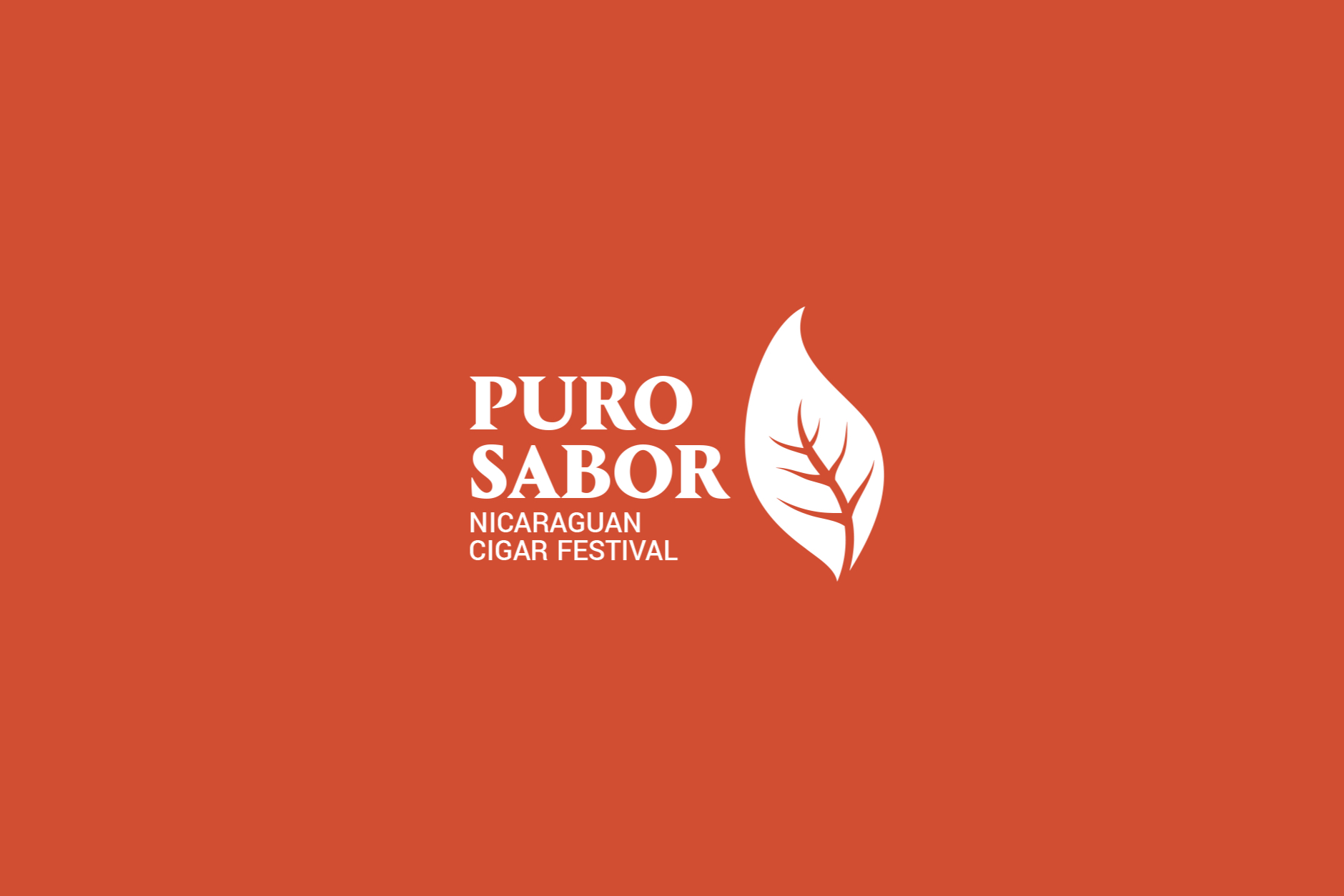Friday, the fifth and final day of the 2023 Puro Sabor festival, began as most do for me, being gently woken up by the sounds of Estelí waking up, from dogs barking to motorcycles revving their engines and any number of vehicles honking their horns. I’m not a breakfast person so I skipped the in-house meal, and instead got ready for my two visits: Padrón and STG Estelí.
It has been several years since I last visited Padrón, or more specifically Tabacos Cubanica S.A., the name of the company’s factory in Estelí. What I thought was going to simply be a factory visit turned out to include visits to two of the company’s fields, as well as a quick stop at its box factory, led by Jorge Padrón, his son Jorge Luis, and his nephew AJ.

The first thing that I noticed—and that Jorge Padrón was quick to point out—is that the factory is at capacity in terms of how many people they can accommodate and thus how many cigars they can produce. There are plans in the works to remedy that, namely by building a new facility at one of the farms so as to move some of the processing over there, and free up some space for more rolling tables and related work areas. This also manifests itself in the fact that rolling and bunching pairs do not sit together as they do in most other factories. Additionally, the presses which hold the cigar molds are up against one of the walls, adding distance to the cigar making process.
In terms of technical things, one of the things that was brought up as a key differentiator in the rolling process is that Padrón uses a truly wet wrapper, meaning that the wrapper leaves are submerged in water once they are handed off to the roller. While every company moistens their wrappers, most do it by way of a spray bottle, not a full dunk in a bucket of water. This technique was implemented by José Orlando Padrón and is said to enhance the elasticity of the leaf for optimal condition when being applied to the bunch.
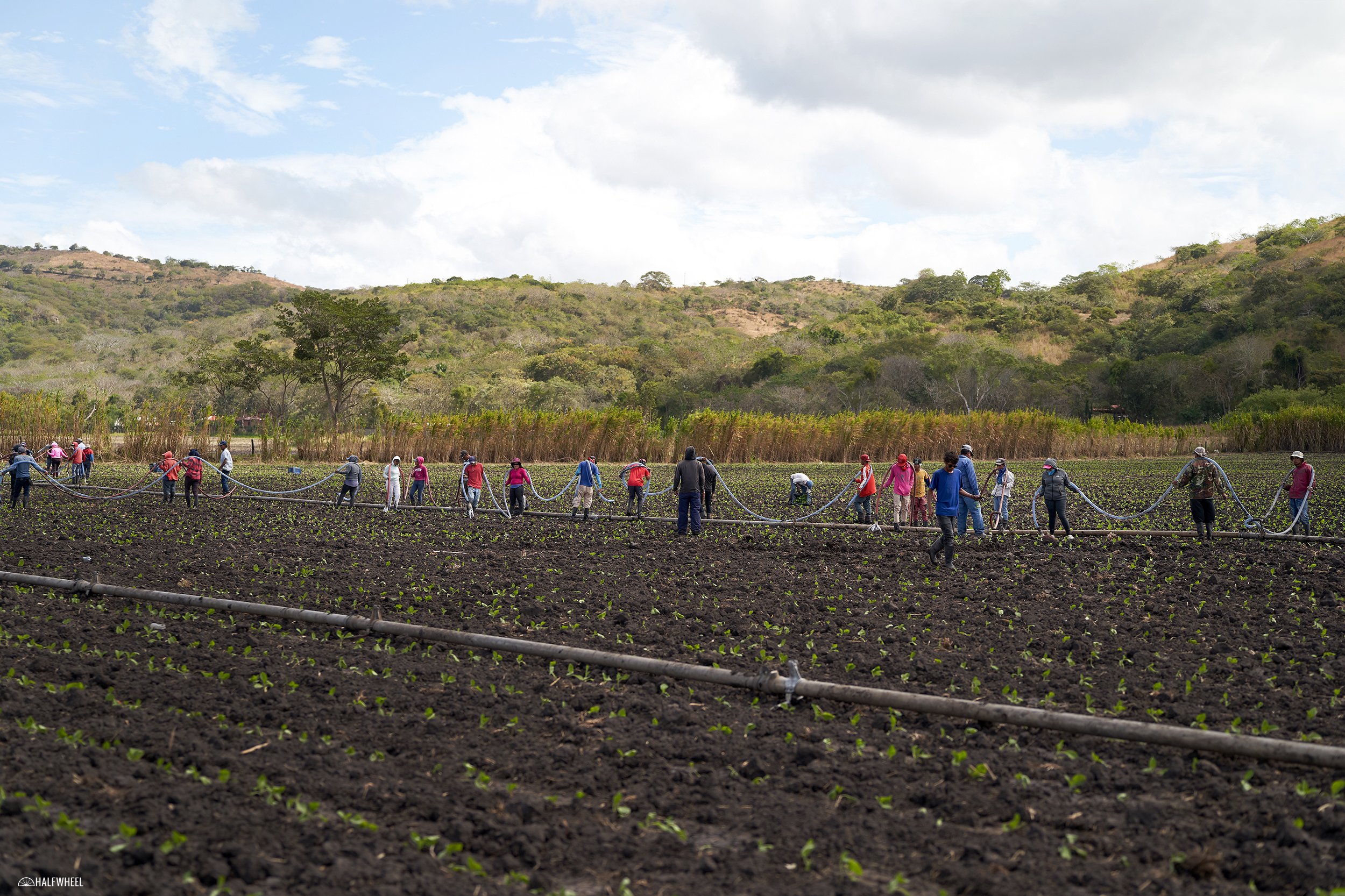
After stops in the galera and packaging department, the latter of which we talked a lot about the company quality control procedures, it was off to one of the company’s farms to see some newly planted crops and talk about the fermentation process.
Earlier this week I noticed that Perdomo seemed to have a workforce that was a bit younger than I expected, both in terms of the median age and the number of younger people working there, simply by an eye test. Padrón was on the opposite end of the spectrum; the company’s workforce appeared to on the older side, something that Jorge Padrón confirmed was due to the fact that many of the company’s employees have been there for many years if not decades.
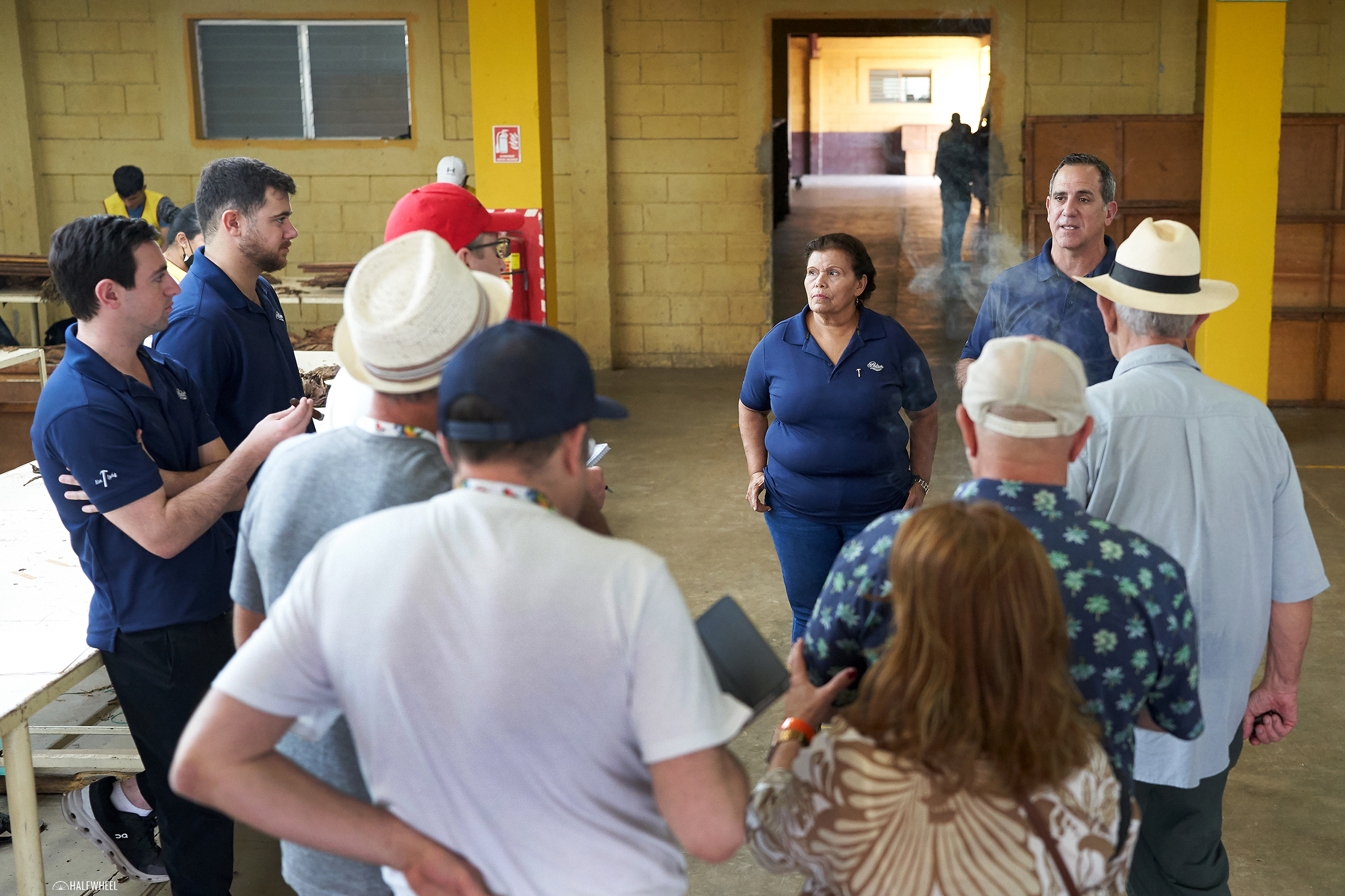
Case in point, in one of the company’s fermentation buildings, Jorge Padrón introduced us to a woman who protested against the Sandinista government to allow Padrón back into the company after he left for Honduras.
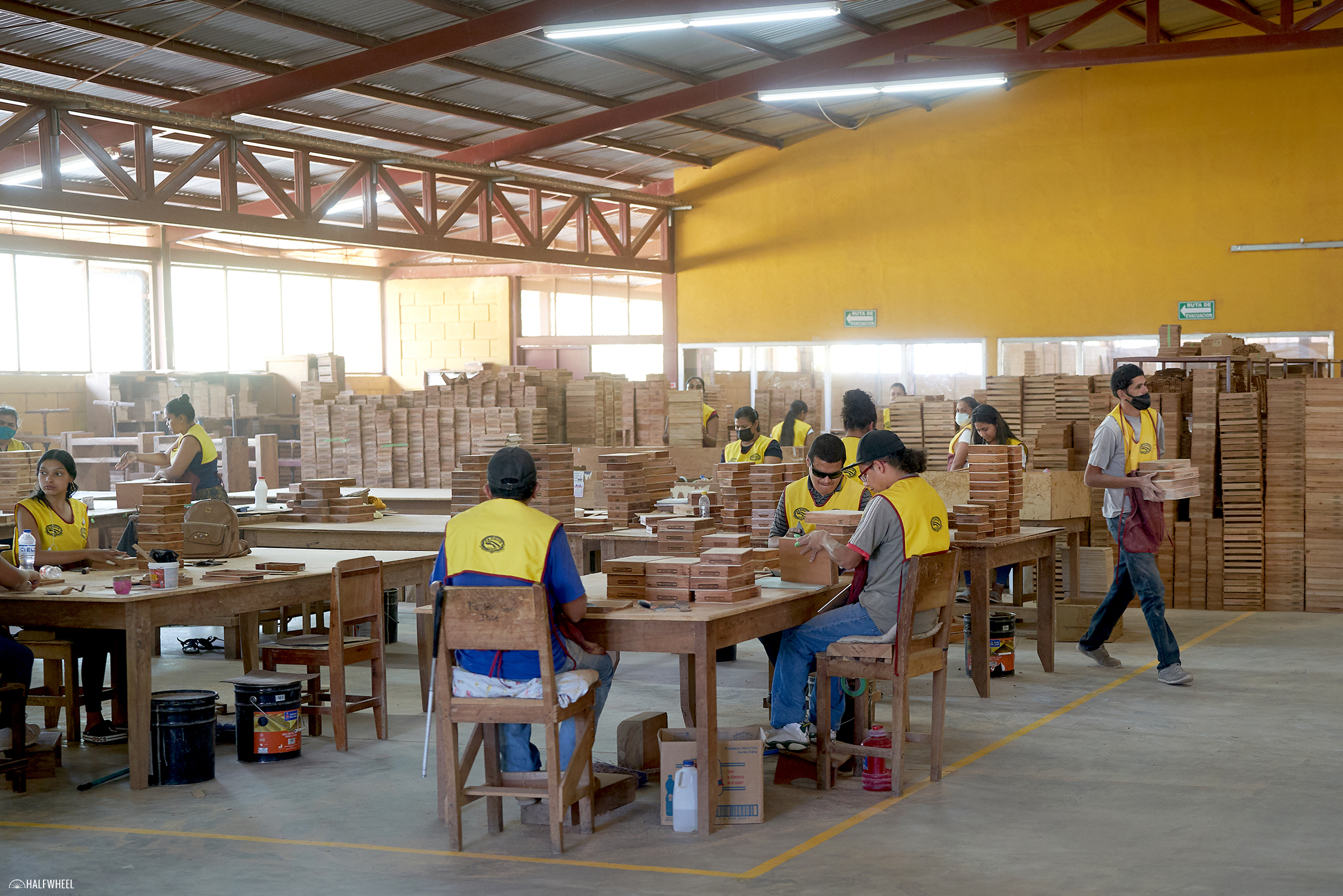
Our visit concluded with a quick stop to the company’s box factory, with a note that Padrón employs a number of people with visual impairments to work as sanders and other staffers in this facility. Additionally, we got to see a unique touch that Padrón adds to each building: an engraving in the floor of each of their buildings commemorating its opening. Additionally, Jorge’s wife added sunflowers throughout this particular building.
After our visit to Padrón, it was off to one of AJ Fernandez’s farms for lunch. The meal wasn’t served in a tobacco barn as in years past, but rather in a covered space that seems to get used for event and get-togethers. The New World El Dorado Figurado was the cigar that I received—I heard there were some toros given out as well—while the meal featured roasted pig as its centerpiece.
STG Estelí marks the second of Scandinavian Tobacco Group’s factories that I have visited, the first being General Cigar Dominicana back in 2012 or so, which was also the first factory I ever visited.
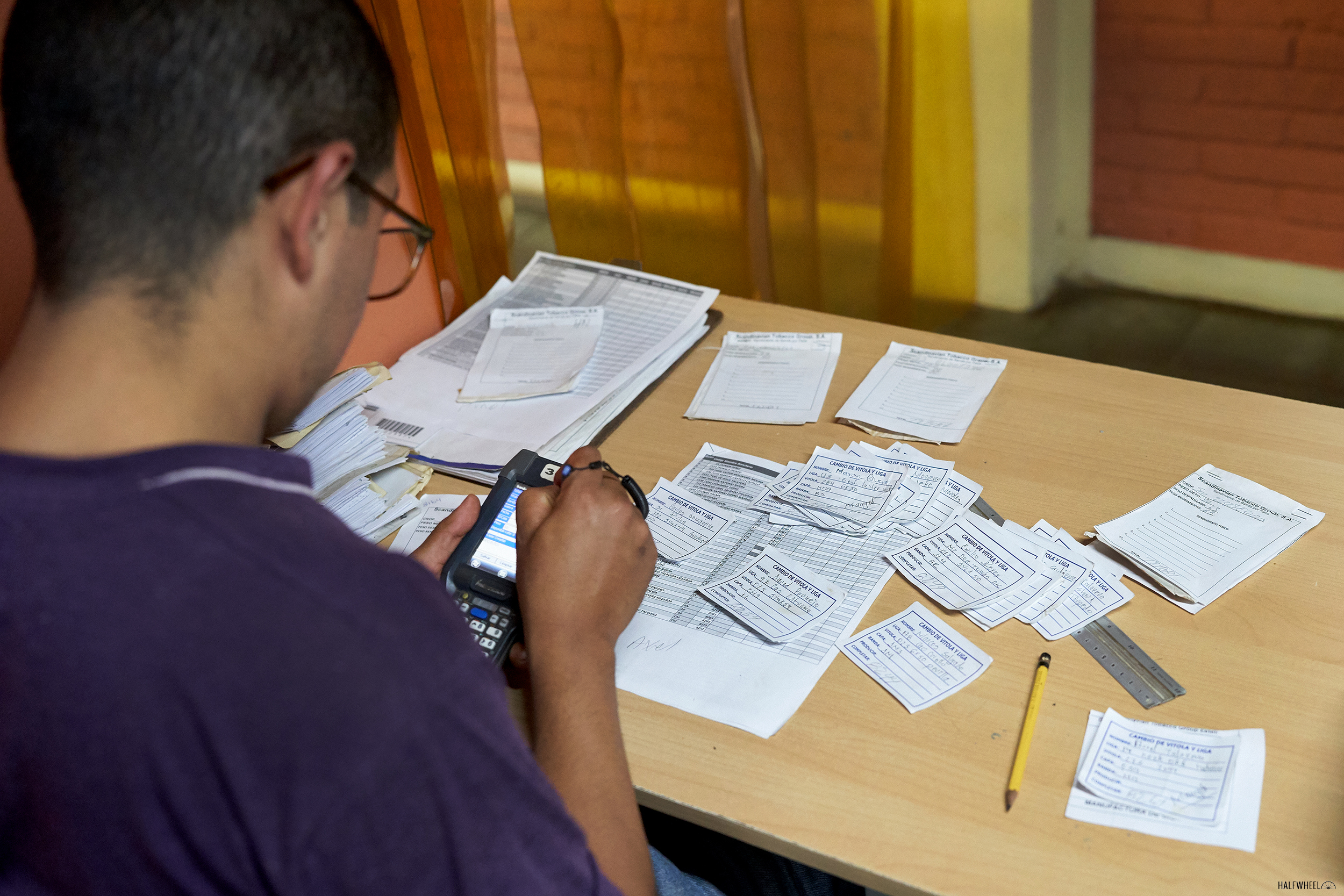
The facility is unique in that it doesn’t do any tobacco processing in-house; rather, all of the tobacco gets shipped from Honduras and is pretty much ready to use, except for the wrappers needing to be de-veined. The facility produces around 10-11 million cigars per year, making it the “boutique factory” of the STG’s trio, the third factory being STG Danlí in Honduras.
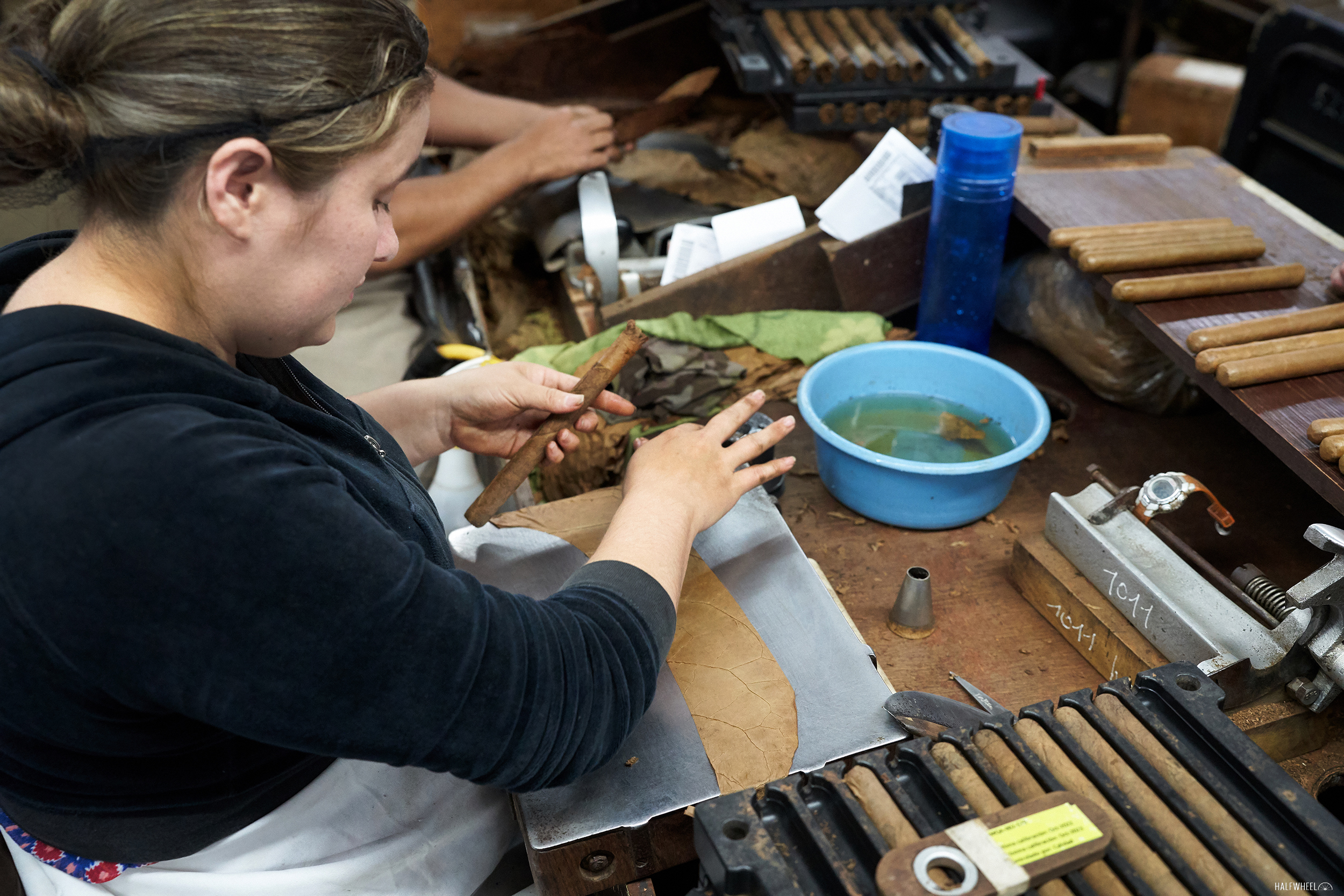
I have said it before and I will say it again, I don’t think I have ever visited a factory and not seen or learned something new. In the case of STG Estelí, I noticed that one of the rollers was applying a small piece of wrapper to the foot of the cigar before applying the rest of the leaf as normal. This is done to help reinforce and protect the foot of the cigar, particularly on larger ring gauges.
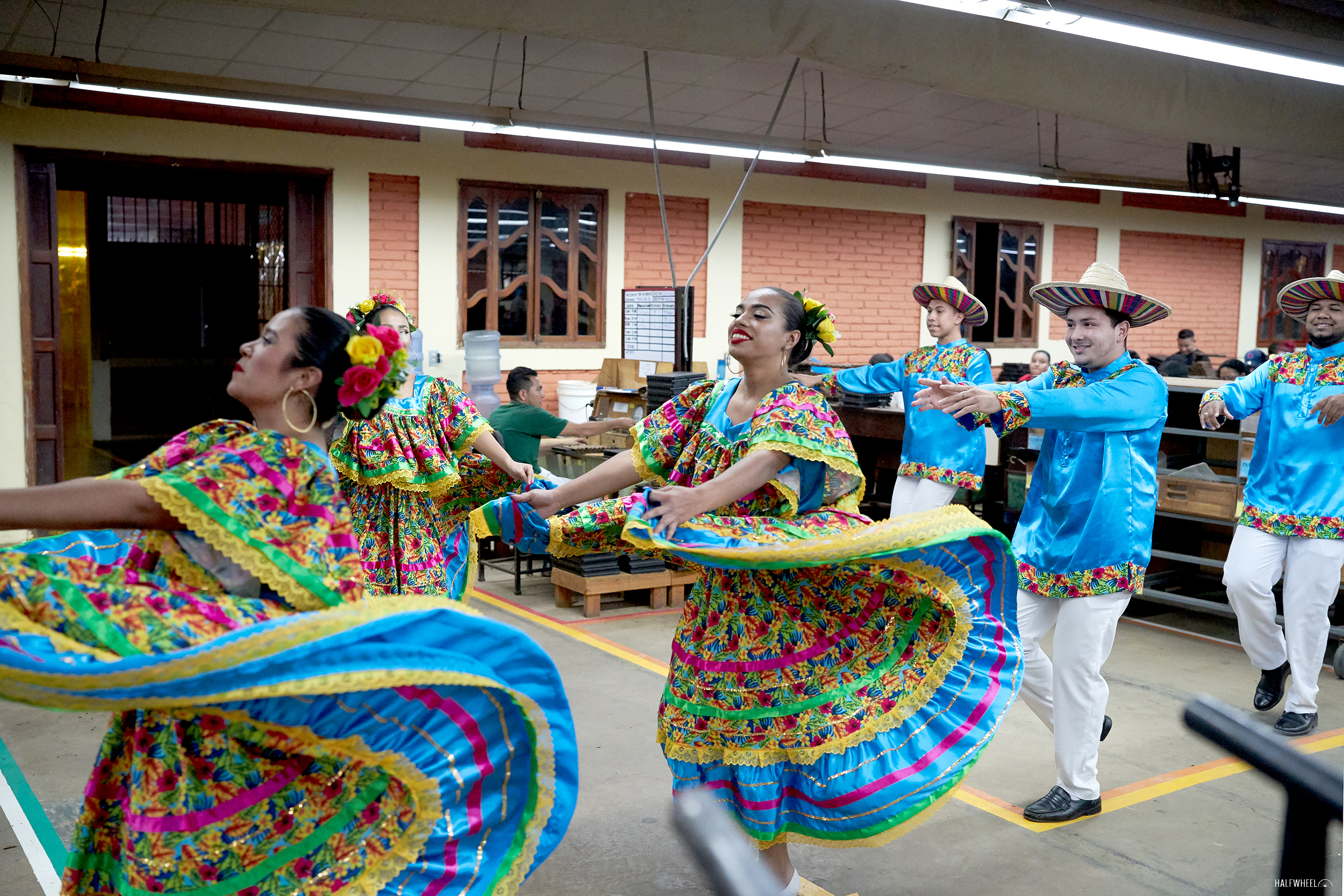
During our walk through the rolling room, we were treated to a performance of some traditional Nicaraguan dances, which was not only well-received by our group, but by the bunchers and rollers who let out cheers and shouts during the performance.
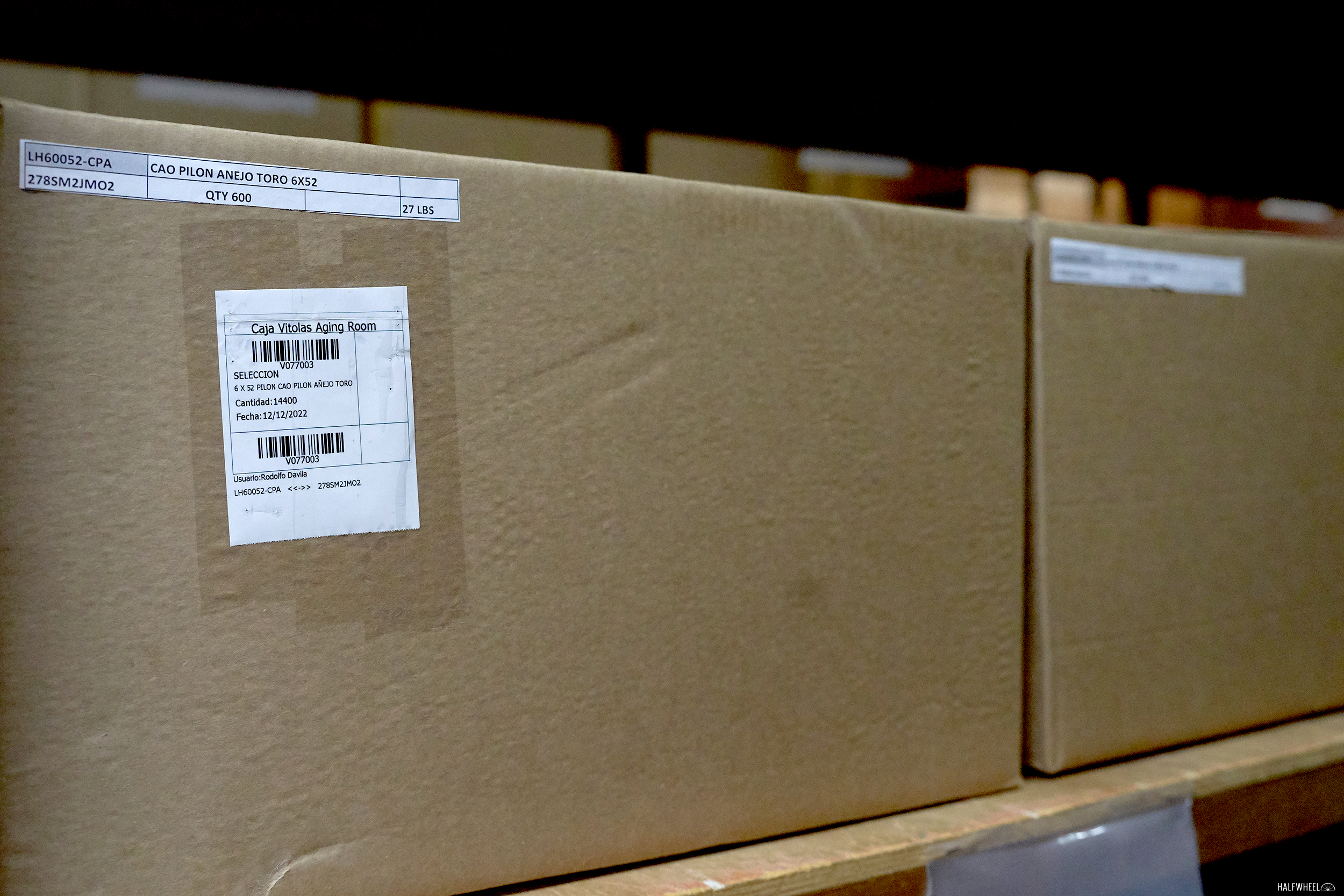
A bit later on in the tour, I noticed something else that I hadn’t seen elsewhere, and in this case was specific to a certain cigar, the CAO Pilón Añejo. The cigars are being aged in cedar-lined cardboard boxes to effectively create a micro-aging room inside the larger one. I’m definitely interested in revisiting the cigars having seen this unique aging process.
Once the visit to STG Estelí was wrapped up, it was back to the hotel to rest and get cleaned up before the closing dinner, which was held at Oliva’s new Las Mesitas facility located north of the main part of Estelí. The facility is a tobacco processing facility, specifically fermenting and storing leaves before they head to one of the company’s factories to be turned into cigars. We didn’t get to see much of the inside of the facility, and none of the areas with tobacco, but the exterior and walkways leading to the outdoor area where the dinner was held are quite impressive.
It was also by far the largest event of the week, with hundreds of people in attendance, including a large group from Belgium made up of friends and family members of Fred Vanermarliere, who heads Vandermarliere Cigar Family (VCF), the owner of Oliva Cigar Co. After Vandermarliere welcomed the crowd to the festival’s final event, the group shared a culturally-rooted cheer as the event got underway:
From there, it was a night of dinner, cigars and dancing into the wee hours of the morning, with the party still going when I finally departed at about 1:30 a.m. Festival goers and others from the cigar industry were still in the mood to party, with a sizable group heading to a bar called Famous, which is located at Estadio Independencia, a multi-use stadium that is home to Real Estelí, the city’s soccer—or fútbol—club that plays in Liga Primera, Nicaragua’s top league.
Saturday morning brought about several rounds of departures, including my own at the rather tame hour of 9:30 a.m. or so, meaning I was able to get some sleep as opposed to departing in the middle of the night for the three-hour drive back to Managua and the airport.
CLOSING THOUGHTS
I was interested to see just what Puro Sabor would be like after two years without the event, and it certainly didn’t disappoint. Almost without exception the event went quite smoothly and continues to show improvement in terms of logistics, what people experience when they visit factories, and in particular, what they eat during the meals. If anything, the food might have been the most noticeable improvement, as every single meal was very enjoyable, so kudos to the team who put the food and catering together.
On the flip side, it was a bit disappointing not to see a number of well-known names in the cigar industry at the festival, especially those who head up well-known Nicaraguan-made cigar brands. I know there were some schedule conflicts, while others said they were simply too busy to attend this year, and I understand it can be tough to make attending an event like this work. That said, I can only imagine a consumer paying a fairly substantial sum of money to attend this event only to find out that some of their favorite cigar makers didn’t make it.
But as I said in an Instagram post when someone asked if attending Puro Sabor was worth it, the answer remains absolutely. Cigar fans can have countless conversations with noted cigar makers as well as the behind-the-scenes people who ensure quality and are responsible for delivering the final product. You can see areas of factories where a lot of the magic happens, you can stand in tobacco fields and be among leaves that will eventually end up in your cigar, and you can get hands-on experiences that will make you appreciate every single step in the seed-to-smoke process.
For me, it was the opportunity to have those conversations that really make this event so good. I never thought a conversation about fertilizer would be among the highlights of my week, but it did after Nestor Andrés Plasencia told me about the care that goes into Plasencia’s fertilizer, and how it is given the same care and attention that the pilones of tobacco get when they are going through fermentation.
There is also something about seeing the sheer volume of tobacco and cigars that is almost overwhelming. You can stand in a field and see hundreds of rows of tobacco plants, only to remember that this is just one of a number farms in one of the growing regions in one of the countries where cigar tobacco is grown. And that’s before seeing thousands of pounds of tobacco in fermentation, thousands more in bales waiting to be used, thousands more currently in use for the making of cigars, and then who knows how many cigars sitting in aging rooms awaiting their time to head to stores and consumers hands. Seeing just one part of the diversity of tobacco, finished cigars, and processes in getting them from seed to smoke really provides a tremendous amount of appreciation for everyone who dedicates their life to this craft.
Finally, trips like this remind me that I really need to get back here soon, as well as to other cigar-making areas, as there is simply so much to see, learn and experience.
Disclosure: Puro Sabor covered the cost of my registration and lodging, while halfwheel paid for travel to and from Nicaragua.

